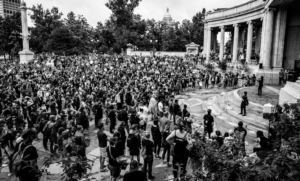Black History Month Trivia Week 3

GEORGE FLOYD PROTESTS – A HISTORICAL TURNING POINT
The George Floyd protests began on May 26, 2020, in Minneapolis, Minnesota, following the murder of George Floyd, an unarmed Black man, by a police officer who kneeled on Floyd’s neck for 9 minutes and 29 seconds. Floyd repeatedly stated he could not breathe while bystanders pleaded for intervention. His death, captured on video, sparked national and international protests against police brutality and racial injustice.
The movement rapidly spread across the U.S. and over 60 countries, with an estimated 15 to 26 million people participating, making it the largest protest movement in U.S. history. While the majority of demonstrations were peaceful, some cities saw instances of rioting, looting, and confrontations with law enforcement.
A significant aspect of these protests was the diverse racial participation, with large numbers of white Americans standing alongside Black and other marginalized communities to demand justice—an unprecedented level of cross-racial allyship in civil rights activism. The protests sparked a global conversation on racial justice, resulting in legislative reforms, police accountability measures, and societal change, while also reshaping the dialogue on race, policing, and activism in the modern era.
Must answer all questions correctly:
- What street intersection in Minneapolis became a memorial and gathering site known as “George Floyd Square”?
- In response to the George Floyd incident, RAM hosted a company-wide Unconscious Bias webinar focused on advancing the understanding of equity and inclusion across race, gender, ability, and other areas of diversity. Which RAM initiative ultimately emerged from these efforts?
See last week’s answers here.

Leave a Reply
Want to join the discussion?Feel free to contribute!